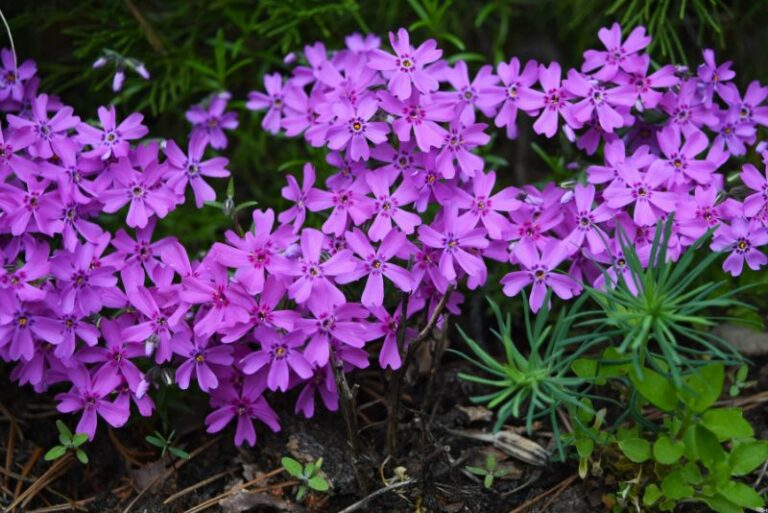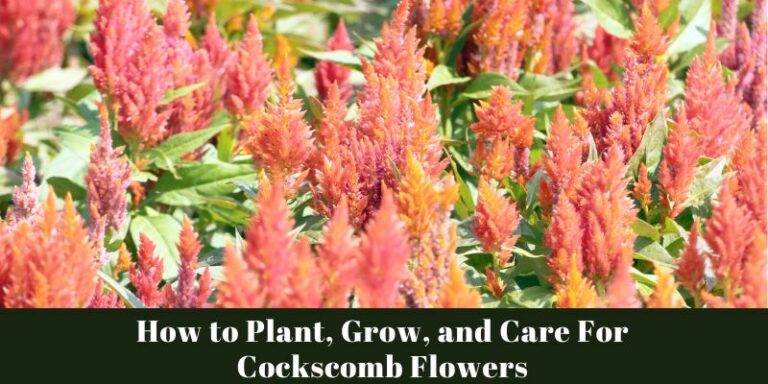Embracing the Charm: The Delight of Growing Sweet Peas
In the tapestry of a garden, few sights can captivate the heart as tenderly as the delicate tendrils and vibrant blooms of sweet peas. These quaint flowers, with their enchanting fragrance and coiling grace, are more than mere plants; they are a portal to simpler times, an ode to nature’s gentleness against the backdrop of today’s fast-paced world.
Gardening, in its essence, is a dialogue with the soil and soul, a silent language spoken in the act of nurturing life from a seed to blossom. Sweet peas epitomize this conversation, as they require a gardener’s careful attention and tender care to truly thrive and unleash their full, fragrant potential.
As an advocate for these alluring blooms, I stand firmly in my belief that everyone should experience the joy of planting, growing, and caring for sweet peas. Whether you are a seasoned horticulturist or a budding green thumb, sweet peas promise a delightful journey into gardening that can intensely gratify and mystically transport one to an era of romance and bucolic splendor.
Let me guide you through the enchanting world of sweet peas, where every step—from the patient sowing of seeds to the patient support of their climbing aspirations—embodies a meaningful activity teeming with life’s simplest pleasures. Join me in exploring the alchemy of earth, water, and care, culminating in a flourish of color and scent that only the sweet pea can bestow upon the diligent gardener
Sweet Peas Overview
Here’s an overview table for Sweet Peas:
| Plant Type: Annual | Maturity Date: 60-70 days after planting | Attracts: Bees, butterflies |
| Season: Spring to Summer | Maintenance: Moderate | Hardiness Zone: 7-11 |
| Pests: Aphids, slugs | Species: Lathyrus odoratus | Plant with: Other climbing plants like clematis or roses |
| Slugs Family: N/A (Not applicable as slugs are not part of the plant’s family) | Growth Rate: Fast | Planting Depth: 1 inch |
| Exposure: Full Sun to Partial Shade | Soil Type: Well-drained soil, rich in organic matter | Watering Requirement: Regularly, do not let soil dry out |
| Diseases: Powdery mildew, rust, and root rot | Native Area: Southern Italy, Sicily | Don’t plant with: Onions, garlic, leeks |
| Genus: Lathyrus | Plant Spacing: 6-8 inches apart | Height: 4-6 feet |
Please note that some information like ‘Slugs Family’ is not applicable to the plant as slugs are pests, not a part of the plant’s taxonomy. The information provided is general and can vary depending on the specific variety of sweet peas and local growing conditions.
All About Sweet Peas

Sweet peas, with their delicate tendrils and vibrant blooms, have captivated gardeners for generations. Originating from the Mediterranean region, these annual climbers belong to the genus Lathyrus and are particularly known for their aromatic flowers, which come in a plethora of colors including pinks, purples, whites, and blues. Ideal for growing on trellises, fences, and in garden borders, sweet peas flourish in cool seasons and prefer well-drained soil, full sun to partial shade, and regular watering.
Cultivating sweet peas begins with the planting of seeds, typically in late winter or early spring, after a period of stratification or soaking to improve germination rates. They are fast growers, and it’s not long before they start to weave their magic, clambering up supports with a natural grace that adds height and texture to floral landscapes. Regular deadheading of spent flowers can prolong their blooming season, ensuring a riot of color and scent throughout the summer months.
Sweet peas are also a popular choice for cut flowers due to their long, straight stems and the enchanting fragrance they exude, which is often described as a quintessential scent of the season. Gardeners who wish to preserve the lineage of particularly beloved varieties or colors can save seeds from their plants, which will be ready for harvest as the pods start to brown and dry on the vine.
On the pest and disease front, sweet peas can fall prey to aphids and powdery mildew. Adequate spacing for air circulation and careful watering techniques that keep foliage dry can help prevent the onset of disease, while companion planting with flowers such as marigolds can naturally deter pests. Despite these challenges, the allure of sweet peas continues unabated, their beauty a testament to the rewards of thoughtful gardening.
Sweet Peas Varieties
The diversity of sweet pea varieties is as rich as their history, tracing back to the 17th century when Franciscan monk, Father Cupani, first sent seeds to England. This moment marked the beginning of a horticultural love affair and the development of numerous cultivars that gardeners enjoy today. Among the most cherished varieties are the ‘Cupani’ sweet pea, with its maroon and violet bicolor flowers—directly descended from Father Cupani’s original. On the other hand, ‘Painted Lady’ offers a nostalgic charm with its bi-color pink and white blossoms reminiscent of Victorian gardens.
As breeders experimented with Lathyrus odoratus, they achieved a range of appearances, from the delicate simplicity of the heirloom ‘Old Spice’ mix to the ruffled grandeur of ‘Spencer’ varieties, named after an English earl’s estate where they were first identified. Spencer cultivars exhibit larger blooms and an extensive color palette, including ‘King’s High Scent’ with its heavenly fragrance and creamy white flowers edged in lavender.
The scent of sweet peas is legendary; often described as a deep, rich, and intoxicating perfume that evokes images of old-fashioned cottage gardens. Some, like the ‘High Scent’ variety, have been specifically cultivated for an aroma that is both sweet and complex, while others may have a lighter, but no less delightful, fragrance.
Sweet peas also share common traits; they all exhibit that characteristic papilionaceous flower shape—a standard, wings, and keel—as a part of the Fabaceae family.
Regardless of the variety, sweet peas require similar care. They thrive in cool temperatures and benefit from early sowing, allowing roots to establish before the warmth of summer encourages top growth and flowering. The beauty of sweet peas is in both their diversity and their universality, providing a fragrant bridge from past to present in the garden.
Sweet Peas Care Procedures
Light and Temperature Requirements for Sweet Peas
To flourish, sweet peas require specific light and temperature conditions. These delicate climbers thrive in full sun but can benefit from light afternoon shade in warmer climates to protect them from the harsh midday heat. Ideal sunlight exposure amounts to about 6 to 8 hours of direct sun per day. While sweet peas fare well in cool environments, they are sensitive to heat and do not perform well in hot summer temperatures. They prefer daytime temperatures ranging between 55°F to 65°F (13°C to 18°C), and night temperatures that are slightly cooler.
Starting seeds indoors can be advantageous in regions with short springs or where gardeners aim to get a jump on the growing season. However, once established and planted outdoors, it is essential to monitor the weather. If temperatures begin to rise consistently above 70°F (21°C), sweet peas may struggle and prematurely cease blooming.
In areas with mild winters, sweet peas can sometimes be planted in autumn, allowing them to establish during the cool season for an early display of spring flowers. When planning your garden, consider incorporating sweet peas in a spot that takes advantage of morning sunlight but is shielded from the intense afternoon rays, especially in areas where summer arrives early or with a higher intensity of heat. Such consideration will help extend the flowering season and ensure the vibrant display of these treasured blooms.
Water and Humidity Requirements for Sweet Peas
Adequate watering is a cornerstone of sweet pea care, and understanding the right balance of moisture is key to their success. Sweet peas prefer consistently moist but not waterlogged soil. Typically, they require about 1 inch of water per week, whether this comes from rainfall or manual watering. During periods of drought or unusually dry conditions, gardeners should be vigilant and provide additional water.
When watering sweet peas, do so at the base of the plants to avoid wetting the foliage, as prolonged moisture on the leaves can promote fungal diseases like powdery mildew. Utilizing a soaker hose or a drip irrigation system is an efficient method to ensure deep watering that encourages robust root development while keeping the leaves dry.
Humidity plays a role in both plant health and flower quality. Sweet peas grow best in environments with moderate humidity, as too much can exacerbate disease issues, while too little may lead to rapid soil drying and stress the plants. If you’re growing sweet peas in a region with high humidity, increasing plant spacing to improve air circulation can help mitigate potential problems.
Mulching around sweet peas is beneficial for retaining soil moisture and keeping the root zone cool. Organic mulch, such as straw or bark chips, also adds nutrients to the soil as it decomposes and can help suppress weeds that would otherwise compete for water and nutrients.
Monitor the soil moisture regularly and adjust your watering habits to account for temperature fluctuations and seasonal changes. Potted sweet peas may require more frequent watering than those in the ground, as containers can dry out quickly, especially in warm conditions. Always ensure containers have adequate drainage to prevent waterlogging, which could harm or kill the plants.
By providing sweet peas with consistent moisture, shielding them from excess humidity, and employing good watering techniques, gardeners will be rewarded with robust growth and an abundance of fragrant blooms.
Soil Types and pH Preferences for Sweet Peas
Sweet peas are adaptable to a variety of soil types but they perform best in rich, loamy soil that drains well. The soil structure should be loose and friable, allowing roots to penetrate deeply and establish a strong foundation for growth. They prefer a neutral to slightly alkaline pH, ranging from 6.5 to 7.5. Before planting sweet peas, it’s beneficial to conduct a soil test to determine the pH and adjust accordingly with lime if the soil is too acidic, or sulfur if it is too alkaline.
Preparing the Soil for Sweet Peas
Proper soil preparation is critical for the health and vitality of sweet pea plants. To prepare the soil:
- Assess and Amend:
Begin by assessing the existing soil structure. If the soil is heavy clay, consider amending it with organic matter such as well-rotted compost or aged manure to improve drainage and aeration. In sandy soils, organic amendments can help retain moisture and nutrients.
- Tilling:
Gently till the soil to a depth of 12 to 18 inches, as sweet peas have deep root systems. This tilling should incorporate the amendments thoroughly into the soil, providing the plants with the rich environment they need to thrive.
- pH Adjustment:
If the soil test indicates the need to adjust the pH, incorporate lime to raise the pH or sulfur to lower it, depending on the requirement. The application rate will depend on the current pH and the texture of the soil, so it is important to follow the recommendations provided with the soil test results.
- Fertilization:
Sweet peas benefit from soils rich in phosphorus and potassium. Adding bone meal or a balanced slow-release fertilizer can provide these nutrients. However, be cautious with nitrogen-rich fertilizers, as they can encourage more foliage growth at the expense of flowers.
- Final Touches:
Once the soil is prepared, rake it to a fine tilth to create a smooth seedbed. Use a rake to break up any clumps and remove stones or debris that may inhibit root growth or drainage.
- Planting Area:
Plan your sweet pea bed, ensuring it’s in an area that meets the light and temperature guidelines previously detailed. If you’re using a trellis or other support structure, install it before planting to avoid disturbing the roots later.
- Watering Before Planting:
After preparing the soil, water the area thoroughly a day before sowing or planting to settle the soil. This will ensure that the moisture is evenly distributed and the planting environment is optimally prepared.
By addressing the soil type, pH levels, and following proper soil preparation techniques, gardeners will create a hospitable environment that encourages healthy growth and abundant blooms from their sweet pea plants.
Fertilizer Requirements for Sweet Peas
For sweet peas to flourish and produce their signature fragrant blossoms, a proper fertilization regimen is crucial. Below is a step-by-step guide on fertilization tailored to sweet pea care:
- Understanding Nutrient Needs:
Sweet peas require a balanced diet of nutrients, with a particular emphasis on phosphorus for root development and potassium for flower production. Excessive nitrogen can lead to lush foliage at the expense of blooms.
- Initial Soil Preparation:
Mix in a slow-release balanced fertilizer or add bone meal to the soil before planting to give sweet peas the best start. Follow the guidelines on the fertilizer packaging for the appropriate amount to use.
- Routine Fertilizing:
Once the plants are established and you’ve noticed a few inches of growth, begin a routine of fertilizing every 4 to 6 weeks. Use a low-nitrogen, high-phosphorus fertilizer to encourage strong root development and abundant blooms.
- Application Method:
Apply granular fertilizer around the base of the plants, being careful to keep the granules away from direct contact with the plant stems or leaves. Water thoroughly after application to help dissolve the fertilizer into the soil and reach the plant roots.
- Monitoring Plant Response:
Keep an eye on your sweet peas’ growth and flowering. If you notice poor growth or a lack of flowers, it may indicate a nutrient deficiency. Before adding more fertilizer, confirm the cause is not due to over-watering or a disease.
- Foliar Feeding:
As an alternative to granular fertilizers, consider using a liquid fertilizer as a foliar spray. This can provide a quick nutrient boost, especially when sweet peas show signs of stress or nutrient deficiency.
- End of Season Care:
Reduce fertilization as the growing season ends. Excess nutrients late in the season can promote new growth that’s susceptible to damage from early frosts.
- Organic Options:
For those preferring organic gardening practices, consider using compost tea or a fish emulsion as a natural fertilizer that provides a broad range of nutrients.
Remember, the key to successful fertilization is not just the application of nutrients, but also the consistency and balance of the nutrient supply to promote healthy growth and plentiful blooms. Always follow package instructions for proper dosages and application frequencies, as over-fertilization can harm the plants and the environment.
Sweet Peas Care Procedures for Repotting
Repotting sweet peas can be essential if you start them indoors or if they have outgrown their current pot. Follow these steps to ensure a successful transition:
- Choosing the Right Time:
The best time to repot sweet peas is when they have developed several sets of true leaves but before the seedlings become root-bound. Aim to repot in the early morning or late afternoon to avoid the heat of the day.
- Selecting a Suitable Container:
Choose a pot that is one size larger than the current one, ensuring it has ample drainage holes. Sweet peas prefer deep containers to accommodate their long taproots.
- Preparation of the New Pot:
Fill the new pot with a mix of potting soil and compost, leaving room for the root ball. Ensure the soil mix is similar to the one the plant is already growing in to prevent shock.
- Removal from the Old Pot:
Water the sweet peas thoroughly before repotting to help ease the root ball out of the pot. Gently tip the plant to the side and carefully remove it, supporting the base of the stem with your hand.
- Root Inspection:
Inspect the root ball for signs of rot or pests. Gently tease out any circling roots to encourage outward growth. If the roots are dense, you can make vertical cuts in the root ball with a clean knife to stimulate new root development.
- Planting in the New Pot:
Place the sweet pea plant in the center of the new pot and fill in around it with additional soil mix. The top of the root ball should be about an inch below the rim of the pot to allow for watering.
- Watering After Repotting:
Water the sweet peas well after repotting to settle the soil around the roots and eliminate air pockets. Adding a layer of mulch on the soil surface can help retain moisture and regulate soil temperature.
- Watch the Plant:
Monitor the sweet peas for signs of transplant shock, such as wilting or yellowing leaves. Keep the plant in a shaded area for a few days and avoid fertilizing until new growth indicates that the plant has adapted to its new pot.
- Continued Care:
Continue to provide the sweet peas with suitable support for climbing, regular watering, and protection from extreme temperatures. Repotting is a stressful event for plants, so be attentive to their needs as they adjust.
By taking a gentle approach and providing the right conditions, your sweet peas will quickly recover from repotting and continue to grow and bloom profusely.
Sweet Peas Propagation Techniques
Propagation is a rewarding way to expand your sweet pea collection, share with friends, or simply enjoy more of those fragrant blooms. There are two common methods: growing from seeds and propagating from cuttings.
Starting From Seeds:
- Seed Selection:
Choose high-quality seeds from a reputable supplier to ensure good germination rates and plant health. Look for disease-resistant varieties if common diseases are a concern in your area.
- Pre-Germination Treatment:
Sweet pea seeds have a hard coat, so to hasten germination, you can either soak them in water for 24 hours or nick the seed coat with a file or knife before planting.
- Sowing Seeds:
Fill seed trays or pots with a well-draining seed starting mix. Plant seeds about an inch deep, spacing them a few inches apart. Cover lightly with soil and water well.
- Germination Conditions:
Keep the soil moist but not waterlogged. Sweet peas prefer cool conditions for germination so place the seed trays in a cool, sunny spot. Expect sprouts in 10-14 days.
- Thinning Seedlings:
Once seedlings have a couple of sets of true leaves, thin out any overcrowded areas to allow for optimal growth. This is also the time to transplant if starting in trays.
Propagating from Cuttings:
- Cutting Selection:
Choose a healthy parent plant and take cuttings from young, but established stems. The cuttings should be about 4-6 inches long with several sets of leaves.
- Preparation of Cuttings:
Cut just below a leaf joint, and strip off the lower leaves. You can also dip the cut end into a rooting hormone powder or gel to stimulate root growth.
- Planting Cuttings:
Plant the prepared cuttings in pots filled with a mixture of peat and coarse sand or a seed starting mix. Make sure to insert the cutting deep enough so it stands upright.
- Rooting Environment:
Place the pots in a warm, well-lit area, but out of direct sunlight. Cover with a plastic bag or cloche to maintain high humidity. Keep the soil moist, and expect roots to develop in a few weeks.
- Potting On:
Once roots have formed and the cuttings show new growth, gradually acclimate them to less humid conditions. Eventually, transplant them into larger pots or directly into the garden.
Regardless of the propagation method chosen, remember that patience is key. With consistent care, your propagated sweet peas will mature into strong plants that continue the cycle of growth and beauty in your garden. Always ensure good soil health and watch out for pests or diseases for the best propagation results.
Sweet Peas Care Procedures for Pruning
Pruning is a key aspect of sweet pea care that encourages vigorous growth and abundant blooms. Here’s a detailed guide:
- Understanding the Purpose of Pruning:
Regular pruning of sweet peas promotes air circulation, reduces disease risks, and stimulates the plant to produce more flowers. It helps in shaping the plant, controlling its size, and prolonging the flowering season.
- Optimal Pruning Time:
The best time to start pruning sweet peas is when they are 4-6 inches in height. This early pruning, also known as ‘pinching out,’ encourages bushier growth and more stems, which leads to more blooms.
- Pinching Out Technique:
- Locate the growing tip, which is the main stem of the sweet pea plant.
- Using your fingertips or a pair of clean, sharp scissors, simply pinch or snip off the tip just above a set of leaves.
- This action should be performed roughly at a height of 4-6 inches from the soil to encourage the plant to produce side shoots.
- Regular Maintenance Pruning:
As the plant grows, continue to prune by removing any dead or yellowing leaves, as well as spent flowers (deadheading). Deadheading is crucial as it prevents the plant from setting seed, encouraging it to continue producing flowers.
- Pruning for Shape and Support:
If growing sweet peas on supports, such as a trellis or obelisk, gently guide new shoots to the support and tie them loosely if necessary. Remove excess growth outside the desired framework to maintain an attractive shape and ensure all parts of the plant receive light.
- Managing Disease Through Pruning:
Keep an eye out for signs of disease or infestation. If any shoots or leaves show mildew or other damage, prune these away promptly to prevent further spread, and dispose of them properly.
- End-of-Season Pruning:
At the end of the blooming season, cut the sweet pea plants back to the ground level. This pruning is more thorough and helps clear away spent plants to make room for new growth the following season.
- Pruning Tools Care:
To prevent disease transmission, always use clean, sharp pruning tools. Sterilize your tools before and after use with a solution of bleach or rubbing alcohol.
By following these pruning procedures, gardeners can enjoy healthy sweet peas that are full of blooms throughout their growing period. Remember that with all pruning, a gentle hand and sanitary practices are essential to keep your plants thriving.
Troubleshooting
Troubleshooting common problems with sweet peas is essential for maintaining a healthy and vibrant garden. Below, we address some key challenges gardeners may encounter when growing sweet peas, including issues with growth, pesky pests, and diseases that can dampen a plant’s vigor.
Growing Problems:
- Poor Flowering:
When sweet peas produce fewer blooms than expected, it can typically be linked to high temperatures or insufficient sunlight. Ensure your plants receive plenty of light and mulch the soil to keep the roots cool.
- Leggy Growth:
Spindly or stretched plants often result from too much nitrogen or low light conditions. Pinching out tips and providing proper support can help manage growth, along with ensuring balanced soil nutrition.
- Yellowing Leaves:
This could be a sign of over-watering or poor drainage. Sweet peas prefer well-draining soil and consistent — but not excessive — moisture levels.
Pests:
- Aphids:
These tiny insects can be found on new shoots and the underside of leaves, sapping the plant of nutrients and potentially spreading diseases. A strong blast of water or the application of insecticidal soap can control their population.
- Snails and Slugs:
These critters enjoy munching on young sweet pea shoots, particularly in damp conditions. Use barriers, organic pellets, or hand-picking to keep them at bay.
- Mice and Birds:
Seedlings and seeds are sometimes eaten by birds and rodents. Protection with netting or cloches can help prevent these attacks.
Diseases:
- Powdery Mildew:
A white powdery substance on leaves and stems suggests mildew, often triggered by dry roots and damp air. Improve air circulation, keep the soil moist, and consider using a fungicide.
- Root Rot:
If the roots are persistently wet, they can succumb to rot. Ensure good drainage in your soil and do not overwater.
- Fusarium Wilt:
This soil-borne fungus leads to wilted leaves and stems, starting at the base. Unfortunately, plants affected by Fusarium wilt should be removed to prevent spreading since there is no effective cure once infected.
By promptly identifying and addressing these issues, you can ensure your sweet peas remain a show-stopping feature of your garden throughout the growing season.
Frequently Asked Questions
Q: How often should I water my sweet peas?
A: Sweet peas prefer consistent moisture. Water them regularly, making sure the soil is moist but not waterlogged. During hot spells or dry weather, water more frequently to keep the soil cool and moist.
Q: Can sweet peas be grown in pots?
A: Yes, sweet peas can thrive in pots or containers as long as they have adequate depth for their roots and support for their climbing habit. Ensure the pot has proper drainage and use a high-quality potting mix.
Q: Do sweet peas need full sun?
A: Sweet peas grow best in full sun, with at least 6 hours of direct sunlight per day. However, in very hot climates, they benefit from afternoon shade to protect them from extreme heat.
Q: How do you keep sweet peas blooming all season?
A: To encourage continuous blooms, deadhead regularly by removing spent flowers before they set seed. Additionally, ensure they have adequate nutrients and consistent moisture.
Q: Are sweet peas susceptible to pests or diseases?
A: Sweet peas can be prone to pests like aphids, as well as diseases such as powdery mildew and Fusarium wilt. Regular monitoring, proper care, and good hygiene can greatly reduce the risk of these issues.






